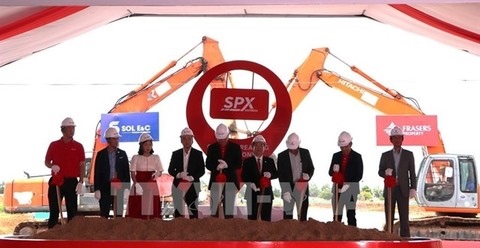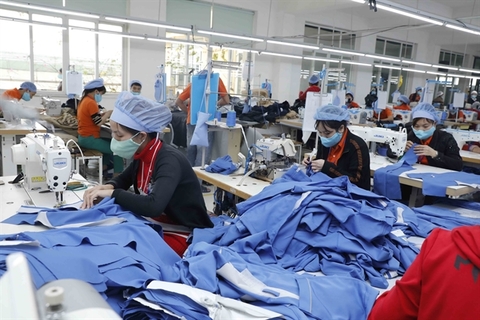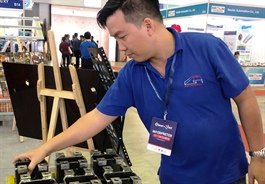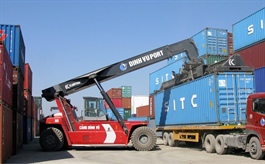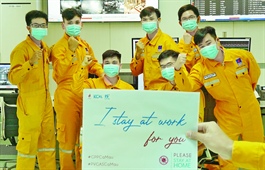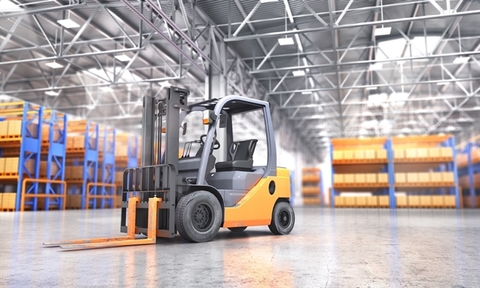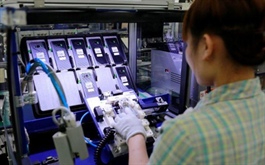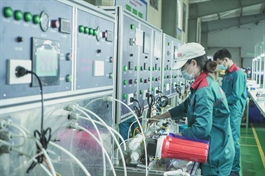'3 on-site' model runs into problems as virus spreads inside isolated facilities
'3 on-site' model runs into problems as virus spreads inside isolated facilities
Enterprises in HCM City and other southern provinces have shelled billions of dong to implement the "3 on-site" model for business continuity however production at these facilities is still at risk of disruption due to the pandemic.
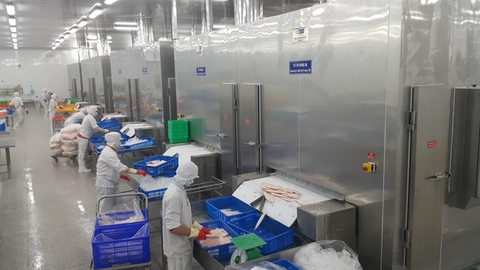
Launched last month, the "3 on-site" model, which involves eating, sleeping, and working without leaving aims to keep production going while ensuring COVID-19 control and prevention measures are met.
However, the implementation of the model, which was applied successfully in the northern industrial hubs of Bac Giang and Bac Ninh in June, has created problems for many enterprises in the southern provinces with positive cases of COVID-19 spreading rapidly throughout industrial zones and the enterprises.
As of August 3, there were 1,931 positive cases found in the 285 businesses working under the model in the southern province of Binh Duong, where 3,747 enterprises were applying the "3 on-site" model.
The authorities of Tien Giang, located next to HCM City, decided to pause the model in the province from July 29 to the end of August 4 as cases of infection spread.
Truong Thi Le Khanh, chairwoman of the Board of Directors of Van Duc Tien Giang Company said 1,200 workers at her firm who tested negative for COVID-19 and work under the 3 on-site had to stop while they waited for a new decision from the authorities.
Khanh told local media: "It is a 'big shock' when our business is complying with the policy and has spent tens of billions of dong to arrange the model and to run it safely without a positive case."
As the company was one of the main facilities for processing of Vinh Hoan Seafood, one of the leading seafood firms in Viet Nam, its postponed operations will disrupt the supply chain.
It also operated aquaculture facilities where it grows pangasius which cannot be sold if overgrown.
Khanh also said that when production stopped suddenly, workers could not return to their homes as most of them had not been vaccinated and most localities were under social distancing orders.
On August 5, many enterprises in Dong Nai Province asked the authorities to stop the model as they could not bear the cost after a little more than a month.
In HCM City, Le Viet Hai, Chairman of HCM City Association of Construction and Building Material and chairman of Hoa Binh Construction Group said: “Business cannot survive under this model.”
Hai said the model could not utilise the advantages the model affords due to limited financial resources. These costs include controlling the entry and exit of employees and frequent testing of the workforce. There is also a lack of resources to provide food and accommodation for workers of many businesses.
Hai said many construction enterprises in HCM City and across Viet Nam had to stop work, adding that: “This inadvertently has a huge impact not only on HCM City and neighbouring provinces but also on the Vietnamese economy. The city alone accounts for more than 20 per cent of the country's GDP and contributes nearly 30 per cent of the national budget.
Hai said instead of the slogan "Staying at home is patriotic" and the "5K message", all people should apply "7K+3T". This includes: "Mask - Distance - Disinfection - Don't gather - Medical declaration - Fresh air - Healthy" and 3T include: "Self-discovery - Self-isolation - Self-care" as these ways could not only increase disease prevention but also help individuals and businesses get ready to fight the disease more effectively.
The chairman said the local authorities should dedicate resources to vaccination programmes by applying information technology to classify all the subjects for vaccination into three groups: healthy people, people with underlying medical conditions, and those that cannot be vaccinated.
The construction leaders suggested vaccinating group one with people arranging, recording and checking everyone's documents while two or three doctors and nurses take care of the vaccinations. With an injecting capacity of no less than 100 injections per day, Hai calculated each spot could inject from 200 to 300 people per day.
Group two would have strong supervision and monitoring by physicians. When anaphylaxis occurs they would be treated quickly.
Estimating that each neighbourhood could have two or three vaccination stations and that each district has from 20 to 25 wards which have 3-5 neighbourhoods each, the whole city with 18 districts and 1 affiliated city could have no less than 2,000 vaccination points.
With his calculations, Hai said the mass vaccination in HCM City would be completed in two months.
Hai added medicine to treat COVID-19 was also key to fight against the virus, saying the Government needed to quickly access and promote the purchase of the drug Molnupiravir to treat positive cases as it was the most effective solution for the fight against the pandemic.
Last week, the Department of Industry under the Ministry of Industry and Trade (MoIT) after a working session with associations and enterprises in the processing and manufacturing industry said it had considered industry feedback and data and had sent to the Ministry of Health and related agencies a number of recommendations to fix the situation.





